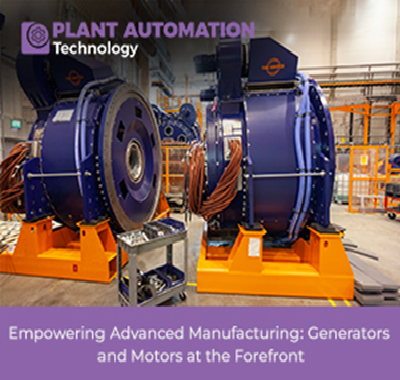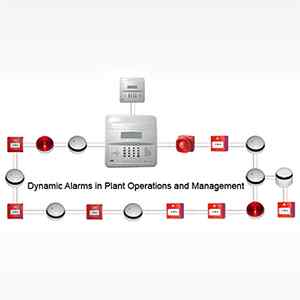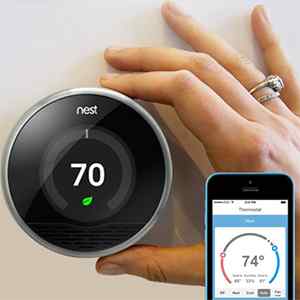Empowering Advanced Manufacturing: Generators and Motors at the Forefront

Introduction
Advanced manufacturing processes have revolutionized industries across the globe, propelling efficiency, precision, and innovation to new heights. At the heart of this transformation lie the unsung heroes—generators, and motors—that power and drive these cutting-edge processes. As manufacturing evolves to meet the demands of the modern world, the seamless integration of generators and motors has become an essential aspect, redefining the landscape of industrial production.
This article delves deeply into the crucial roles that generators and motors fulfill in advanced manufacturing. It investigates how these elements, once viewed as basic mechanical tools, have transformed into sophisticated and influential entities, revolutionizing the approach to product design, creation, and assembly. Ranging from automated assembly lines to additive manufacturing, and from meticulous machining to laser cutting, we will unveil the extensive array of applications that underscore the interconnected rapport between generators, motors, and the capabilities they empower within advanced manufacturing techniques.
As we journey through the realms of automation, efficiency, and sustainability, we aim to shed light on the intricate dance between technological innovation and industrial progress. This exploration will not only illuminate the mechanics behind these advancements but also underscore the significance of harnessing the capabilities of generators and motors to propel manufacturing into a new era.
Role of Generators and Motors in Advanced Manufacturing
The realm of advanced manufacturing is characterized by its relentless pursuit of precision, speed, and efficiency. At the core of this pursuit are generators and motors, two integral components that have transformed from basic mechanical devices to sophisticated tools driving the wheels of modern production. Let's delve into the multifaceted roles these components play in shaping the landscape of advanced manufacturing processes.
1. Powering Automation:
Generators and motors are the dynamic duos powering the automation revolution. In robotic assembly lines, motors translate intricate algorithms into precise movements, ensuring seamless product assembly with minimal human intervention. Generators provide the consistent power supply needed to drive these robots, preventing interruptions that could disrupt the delicate balance of the production process.
2. Precision Machining:
In the realm of Computer Numerical Control (CNC) machining, motors are the workhorses responsible for translating digital designs into tangible products. These motors meticulously control tool movement, enabling intricate cuts, shaping, and finishing with unparalleled precision. The synergy between generators and motors guarantees a continuous power source, ensuring uninterrupted operation even in the most intricate machining operations.
3. Additive Manufacturing and 3D Printing:
The ascent of additive manufacturing and 3D printing has marked a true paradigm shift. Motors take on a central role in propelling the motion of printheads and build platforms, enabling the incremental assembly of intricate structures, layer by layer. The meticulous control of motor maneuvers leads to the formation of complex geometries, stretching the boundaries of manufacturing potential. In this context, generators play a vital role by providing a consistent energy source that upholds the printing process, irrespective of unpredictable changes in external power conditions.
4. Laser Cutting and Welding:
Laser-based manufacturing processes, such as cutting and welding, rely on generators to produce the high-energy laser beams necessary for these operations. Motors then take the reins, guiding the laser's path with micron-level accuracy. This marriage of generators and motors results in clean, precise cuts and welds, optimizing manufacturing across industries such as aerospace, automotive, and electronics.
5. Materials Handling and Conveyor Systems:
Efficient material handling is a cornerstone of streamlined manufacturing. Motors power conveyor belts and automated material handling systems, facilitate the movement of raw materials, work-in-progress, and finished goods. In the event of power disruptions, generators step in to ensure the continuous flow of materials, preventing bottlenecks in production.
6. High-Speed Packaging and Labeling:
The blistering pace of modern production lines demands rapid packaging and labeling processes. Motors are the engines driving these high-speed machines, orchestrating the accurate placement of labels and packaging materials. Generators stand ready to prevent downtime due to power fluctuations, guaranteeing seamless packaging operations.
7. Energy Efficiency and Sustainability:
Generators and motors have undergone a transformation, embracing greater energy efficiency in line with the global drive for sustainable practices. Innovative motor designs curtail energy wastage while ensuring top-notch performance. Strategic utilization of generators as backup power sources guarantees environmentally aware and resource-conscious manufacturing practices.
In the intricate web of advanced manufacturing, generators, and motors serve as the threads that interlace precision, automation, and efficiency. As industries persist in pushing the frontiers of innovation, the fusion of these two components will remain the bedrock of accomplishments and advancements in contemporary manufacturing processes. In forthcoming sections of this article, we will plunge into specific instances of generators and motors in diverse advanced manufacturing domains, spotlighting their revolutionary impact on industrial progress.
Generator and Motor Applications
In the dynamic landscape of advanced manufacturing, the symbiotic relationship between generators, motors, and robotics has redefined the concept of production efficiency. Robotic assembly and automation, powered by these technological marvels, have become pivotal in achieving precision, speed, and consistency in manufacturing processes.
A) Robotic Assembly and Automation
Motors: The Precision Enablers
At the heart of robotic assembly lines are motors that serve as precision enablers. These motors meticulously convert programmed instructions into exact movements, allowing robots to perform intricate tasks with micron-level accuracy. Whether it's placing components onto a circuit board or welding intricate joints, the controlled movement of these motors ensures that each step of the assembly process is executed flawlessly.
Generators: Powering Uninterrupted Automation
The consistency of robotic operations hinges on a stable power supply. Generators step in as dependable power sources, ensuring uninterrupted automation even in the face of grid fluctuations or power outages. This reliability is crucial in maintaining the integrity of the assembly process and preventing costly disruptions.
Application Examples:
• Automotive Industry: Robotic arms equipped with motors assemble complex vehicle components, from engines to intricate wiring harnesses. Generators provide backup power to ensure uninterrupted production, safeguarding against production line downtime.
• Electronics Manufacturing: Motors guide robotic arms to precisely position delicate electronic components on printed circuit boards. Generators act as insurance against power surges or failures, guaranteeing consistent assembly in the creation of intricate electronic devices.
• Pharmaceuticals: Robots powered by motors undertake the intricate task of pharmaceutical packaging, ensuring accurate sorting, labeling, and sealing of medications. Generators come into play to prevent interruptions, ensuring that the packaging process remains continuous and error-free.
The synergy between generators, motors, and robotics transcends mere automation; it is the epitome of efficiency and accuracy. As the manufacturing industry embraces the future, robotic assembly lines powered by these components are shaping the landscape of production, setting new benchmarks for precision and speed. The next section will delve into yet another facet of advanced manufacturing—the realm of CNC machining and precision
manufacturing—where the influence of generators and motors is equally profound.
B) CNC Machining and Precision Manufacturing
In the realm of advanced manufacturing, the combination of generators and motors finds a profound expression in Computer Numerical Control (CNC) machining—a cornerstone of precision manufacturing. This union drives the intricate dance of cutting, shaping, and finishing materials with unparalleled accuracy and efficiency.
Motors: Orchestrating Precision Movements
CNC machining centers on motors that orchestrate the precise movements of cutting tools and workpieces. These motors translate digital designs into tangible products, executing complex operations with micron-level precision. Through careful control, motors ensure consistent feed rates, depths, and angles, resulting in immaculate and repeatable parts production.
Generators: Ensuring Continuous Operation
Generators play a pivotal role in sustaining CNC machining operations. The demands of high-speed machining can strain local power grids, potentially leading to voltage fluctuations or power outages. Generators step in to provide a stable and uninterrupted power supply, mitigating any risk of production disruptions due to power-related issues.
Application Examples:
• Aerospace Industry: CNC machining powered by motors produces intricate components for aircraft engines and structural parts. Generators act as a safety net, guaranteeing that machining operations continue smoothly without compromising precision.
• Medical Device Manufacturing: High-precision CNC machining is essential in crafting complex medical implants and instruments. Motors ensure that intricate geometries are realized with utmost accuracy, while generators safeguard against power hiccups that could compromise the manufacturing process.
• Tool and Die Industry: CNC machining with motors is instrumental in crafting molds, dies, and tools used in various manufacturing processes. Generators come into play to maintain a consistent power supply, safeguarding the precision and integrity of these critical components.
The amalgamation of generators, motors, and CNC machining represents the pinnacle of precision manufacturing. It's a realm where digital designs are transformed into tangible products with a level of accuracy that was once inconceivable. As industries continue to push the boundaries of what's achievable, CNC machining stands as a testament to the power of technology, underscored by the seamless harmony between generators and motors. The subsequent section will illuminate the realm of additive manufacturing and 3D printing, where these components continue to reshape the landscape of production.
C) Additive Manufacturing and 3D Printing
In the world of manufacturing, few innovations have captured the imagination as vividly as additive manufacturing, commonly known as 3D printing. This revolutionary process, empowered by the interplay of generators and motors, has shattered traditional manufacturing boundaries and given rise to new possibilities.
Motors: Precise Layer-by-Layer Creation
Central to 3D printing are motors that meticulously control the movement of printheads and build platforms. These motors facilitate the layer-by-layer creation of complex structures, from intricate prototypes to functional end-products. The precise control of motor movements allows for the realization of designs with intricate geometries, a feat that was once thought unattainable.
Generators: Uninterrupted Layering Process
Generators join the scene to ensure an uninterrupted layering process. The stability of this process is essential for the quality of the final product. In cases where the power supply might fluctuate, generators provide a consistent energy source, safeguarding the continuity of the 3D printing operation.
Application Examples:
• Aerospace Prototyping: 3D printing powered by motors is instrumental in creating rapid prototypes of aerospace components. Generators step in to maintain power stability during the printing process, ensuring that the prototypes accurately reflect the intended designs.
• Medical Implants: The precision of 3D printing makes it a game-changer in the field of medical implants. Motors translate digital scans into intricately designed implants, while generators provide the necessary power consistency to ensure every layer is flawlessly added.
• Art and Design: Creative minds harness 3D printing to bring intricate designs to life. Motors guide the printhead's every movement, enabling the creation of breathtaking sculptures and art pieces. Generators ensure that artistic visions are realized without disruptions.
Additive manufacturing stands as a testament to the boundless creativity of human ingenuity, and the collaboration between generators and motors forms its cornerstone. Through this partnership, industries have embraced a paradigm shift in manufacturing—one where objects are built layer upon layer, guided by the precision of motors and powered by the unwavering support of generators. As we move forward, the following section will shed light on yet another facet of advanced manufacturing—the world of laser cutting and welding—where the influence of these components remains equally profound.
D) Laser Cutting and Welding
In the realm of advanced manufacturing, where precision meets efficiency, the fusion of generators and motors finds its brilliance in laser cutting and welding. These processes, guided by precise motor control and powered by high-energy generators, have reshaped the way industries shape and join materials with utmost accuracy.
Generators: Powering High-Energy Lasers
At the heart of laser cutting and welding is the generator that produces the high-energy laser beam required for these operations. These generators provide the necessary power density to melt, vaporize, or ablate materials with pinpoint accuracy. The laser's intensity is crucial in achieving clean and precise cuts or welds.
Motors: Orchestrating Laser Precision
Motors take the reins when it comes to laser beam movement and positioning. These motors guide the laser's path with micron-level accuracy, ensuring that the cuts or welds adhere to the intended designs. The synchronized dance of motors results in intricately precise patterns on materials, making laser processes the epitome of accuracy.
Application Examples:
• Automotive Manufacturing: Laser cutting is pivotal in shaping intricate car body components with clean edges. Motors steer the laser beam, while generators ensure that the laser maintains its intensity, delivering swift and precise cuts even in challenging materials.
• Metal Fabrication: Laser welding, guided by precise motor control, joins metals with minimal heat-affected zones. Generators provide the power required to create high-energy laser beams, resulting in strong and seamless welds in various industrial applications.
• Electronic Components: Laser cutting is utilized to create intricate shapes in circuit boards and electronic components. Motors ensure the laser follows precise paths, and generators guarantee a stable energy supply, making these processes crucial in electronics manufacturing.
The collaboration of generators and motors in laser cutting and welding exemplifies the combination of power and precision. As industries demand materials to be cut and joined with unprecedented accuracy, the controlled energy of generators and the meticulous guidance of motors enable laser processes to meet these requirements. In the subsequent section, we delve into the domain of materials handling and conveyor systems, where generators and motors streamline the flow of materials through advanced manufacturing processes.
E) Materials Handling and Conveyor Systems
In the intricate steps of advanced manufacturing, where efficiency is paramount, the conductors are none other than generators and motors, orchestrating the movement of materials through sophisticated conveyor systems. This vital interplay ensures seamless material flow, facilitating uninterrupted production across various industries.
Motors: Propelling Material Flow Conveyor systems are brought to life by motors that propel the movement of materials along intricate paths. These motors ensure that raw materials, work-in-progress, and finished products traverse the manufacturing floor with precision and efficiency. Their controlled motion optimizes material handling, contributing to streamlined processes.
Generators: Guaranteeing Uninterrupted Flow In the fast-paced world of manufacturing, disruptions can be costly. Generators act as the safety net, ensuring an uninterrupted material flow even in the face of power fluctuations or outages. Their role becomes particularly crucial when the manufacturing process is time-sensitive, preventing delays and bottlenecks.
Application Examples:
• Automotive Assembly: Motors power conveyor systems that transport vehicle components through assembly lines. Generators provide the reliability needed to sustain the conveyor's operation, ensuring that components move seamlessly through the manufacturing process.
• Food and Beverage Production: Conveyor systems equipped with motors facilitate the movement of raw ingredients, packaging materials, and finished products in food and beverage plants. Generators safeguard against power disruptions, ensuring continuous material flow in food processing operations.
• Distribution Centers: In distribution centers, conveyor systems powered by motors efficiently sort and route packages for delivery. Generators step in to maintain the conveyor's operation, avoiding delays that could impact order fulfillment.
The partnership of generators and motors in materials handling and conveyor systems is a symphony of efficiency. As industries strive to optimize production processes, these components form the backbone that ensures materials flow seamlessly from one stage to another. From automotive to food production, the impact of this collaboration reverberates through various sectors, demonstrating how generators and motors enhance manufacturing efficiency. In the subsequent sections, we'll explore their roles in high-speed packaging and labeling, as well as their contributions to energy efficiency and sustainability in advanced manufacturing.
F) High-Speed Packaging and Labeling
In the world of advanced manufacturing, where speed and precision converge, the partnership of generators and motors takes center stage in the high-speed production of packaging and labeling. This dynamic collaboration ensures products are packaged swiftly and accurately, meeting the demands of modern consumer markets.
Motors: Orchestrating Swift Movements
High-speed packaging and labeling demand precision at an accelerated pace. Motors step into this role, orchestrating the rapid movements of packaging machinery. These motors control the placement of labels, folding of boxes, and sealing of packages with split-second accuracy, ensuring products are prepared for distribution with efficiency.
Generators: Ensuring Continuous Operation
The fast-paced nature of high-speed packaging and labeling processes demands a reliable power source. Generators come into play, ensuring a consistent and uninterrupted power supply. This proactive measure prevents disruptions in packaging operations due to power fluctuations, safeguarding both efficiency and quality.
Application Examples:
• Food Packaging: Motors drive the high-speed packaging of perishable goods, ensuring they are sealed and ready for distribution. Generators provide the necessary power stability, avoiding interruptions that could lead to spoilage or delays.
• Pharmaceutical Industry: In the pharmaceutical sector, high-speed labeling machines apply precise labels to medication packaging. Generators guarantee a steady power supply, minimizing any risk of mislabeling due to power disruptions.
• Consumer Goods: High-speed packaging plays a critical role in the consumer goods industry, where products must be packaged swiftly to meet market demand. Motors and generators collaborate to ensure that packaging lines operate seamlessly, supporting efficient distribution.
The collaboration between generators and motors in high-speed packaging and labeling showcases their synergy in delivering rapid and accurate production. As consumer preferences shift and markets evolve, the ability to package and label products swiftly becomes essential. This partnership empowers industries to adapt to changing demands while maintaining the level of precision that is crucial for modern manufacturing. In the following sections, we will explore how generators and motors contribute to energy efficiency and sustainability, as well as their integration into the Industry 4.0 framework of advanced manufacturing.
F) Energy Efficiency and Sustainability
In the quest for a more environmentally friendly and sustainable future, the partnership between generators and motors in advanced manufacturing assumes an added layer of significance—energy efficiency. As industries work towards diminishing their ecological impact, these elements assume a pivotal role in enhancing power utilization and advocating for sustainable methodologies.
Energy-Efficient Motors: A Greener Path
Modern motors are designed with energy efficiency in mind. By minimizing energy wastage and maximizing output, these motors contribute to the overall efficiency of manufacturing processes. They ensure that power consumption is streamlined, reducing operational costs and environmental impact.
Sustainable Generators: Powering with Responsibility
Generators, too, have evolved to embrace sustainability. Advanced generators are designed to operate efficiently, minimizing fuel consumption and emissions. Their integration into manufacturing processes ensures that backup power is available when needed, maintaining the momentum of production without compromising sustainability goals.
Application Examples:
• Renewable Energy Integration: Sustainable generators can be paired with renewable energy sources such as solar or wind to provide backup power. This reduces reliance on traditional power sources and lowers the carbon footprint of manufacturing operations.
• Energy-Optimized Manufacturing Lines: Motors equipped with energy-efficient designs drive conveyor systems, robots, and machinery. This optimization translates to reduced energy consumption and extended equipment lifespan.
• Reduced Downtime: Efficient generators ensure that manufacturing processes continue uninterrupted, preventing downtime that might result from power disruptions. This contributes to consistent productivity and resource utilization.
As industries shift towards a more sustainable future, the contributions of generators and motors in optimizing energy consumption cannot be overstated. Their role extends beyond powering machines; they are instrumental in shaping a manufacturing landscape that embraces responsible energy use and environmental stewardship. In the subsequent section, we'll explore the integration of generators and motors into the Industry 4.0 framework, where data-driven insights drive the evolution of advanced manufacturing processes.
G) Industry 4.0 Integration
In the era of Industry 4.0, where data-driven insights and connectivity reign supreme, the partnership between generators and motors takes on a new level of significance. These components are not only powering advanced manufacturing but also becoming integral to the smart factory ecosystem, where real-time data and predictive analytics drive unprecedented levels of efficiency and optimization.
Smart Monitoring and Predictive Maintenance:
Generators and motors are equipped with sensors that gather real-time data about their performance. This data is transmitted to central systems, enabling predictive maintenance. Anomalies and potential issues are detected early, allowing for scheduled maintenance before failures occur. This minimizes downtime, reduces repair costs, and optimizes overall operational efficiency.
Optimized Resource Utilization:
By integrating generators and motors into Industry 4.0 frameworks, manufacturers gain insights into power consumption patterns, efficiency levels, and operational trends. This information empowers decision-makers to optimize resource utilization, balancing energy consumption with production demands and minimizing waste.
Application Examples:
• Connected Robotics: Sensors embedded in motors of robotic arms provide data on usage patterns and wear. This data feeds into predictive maintenance algorithms, ensuring that maintenance actions are taken before critical failures impact production.
• Remote Monitoring: Generators in remote locations can be equipped with sensors that transmit real-time performance data. This information enables operators to monitor and manage these generators remotely, optimizing fuel consumption and maintenance scheduling.
• Data-Driven Decision-Making: By analyzing data from motors and generators, manufacturers can fine-tune processes for optimal efficiency. For example, adjusting motor speeds based on real-time demand can lead to energy savings without sacrificing production targets.
As Industry 4.0 redefines manufacturing paradigms, generators, and motors are evolving from mere power sources to data sources. Their integration into the digital ecosystem of smart factories empowers manufacturers to make informed decisions, optimize processes, and elevate efficiency to unprecedented levels. This transformation is not only a testament to technological progress but also a nod to the pivotal role these components play in shaping the factories of the future.
Conclusion
The partnership of generators and motors has transcended traditional roles to become transformative forces in advanced manufacturing. From powering robotic assembly lines to orchestrating precision machining, from driving 3D printing to shaping laser cutting and welding, these components underpin the foundation of modern production.
As industries continue to evolve, these dynamic duos are becoming the catalysts for efficiency, sustainability, and connectivity. The symphony they create within materials handling and conveyor systems, their pivotal role in high-speed packaging and labeling, and their contributions to energy efficiency and Industry 4.0 integration—all illuminate a path toward a future where manufacturing is driven by precision, innovation, and responsible resource utilization.
In this relentless march of progress, generators and motors stand as steadfast companions, shaping manufacturing processes and pushing the boundaries of what's achievable. As we embark on the next wave of manufacturing advancements, we can rest assured that these components will continue to power our journey into an era of unprecedented possibilities.







